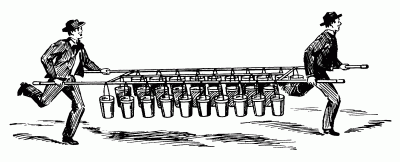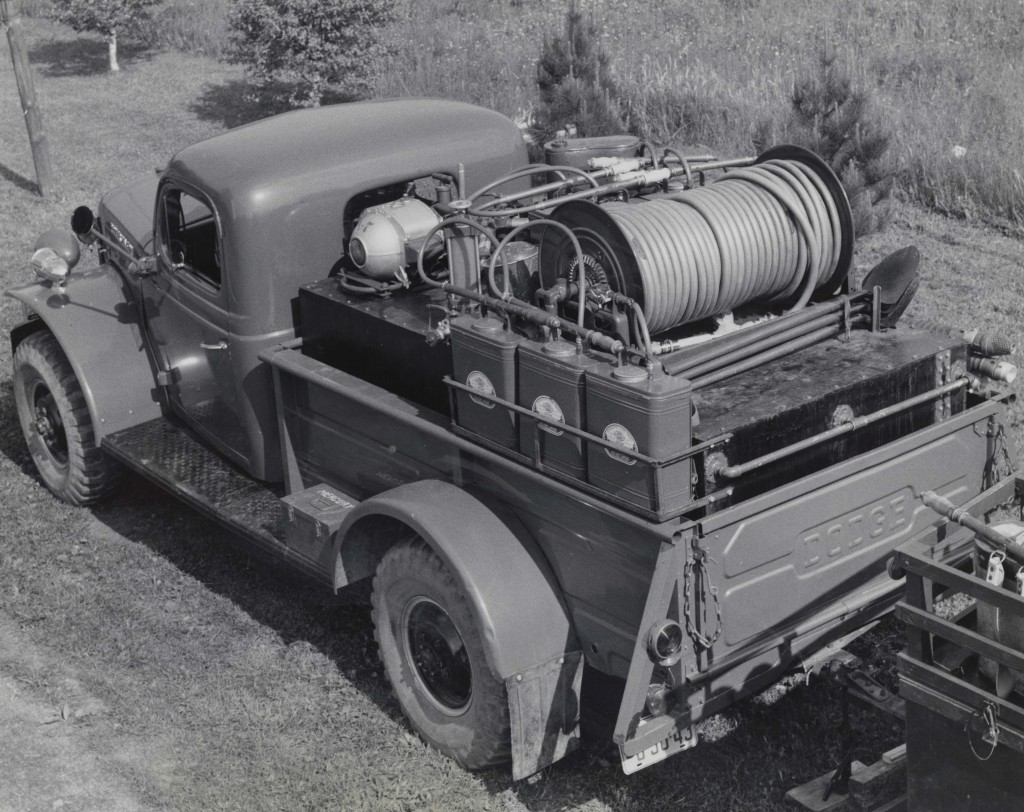The humble water pump is considered by some to be the greatest invention for fire suppression, saving lives and sparing property from fire devastation.
If speed and water are the two components in stopping fires, then portable water pumps were a necessity. Water pumps on wheels, often pulled by men, appeared in the 1700s in the US and England to supplement the work of volunteers passing water buckets from one to another forming a “bucket brigade.” Patents for the first fire engine pump, a twin cylinder single acting pump on a wheeled cart, were granted to Richard Newsham, a British entrepreneur. This invention allowed water to shoot up to 135 feet while the bucket brigade filled the cistern and men operated the cross handles.

The first Canadian portable pump for use in wildland fires was designed in 1915 by fire inspector H.C. Johnson while serving on the Board of Railway Commissioners. The Fairbanks Morse Company manufactured the pump consisting of a water-cooled, four-to-five horsepower, two-cycle, twin-cylinder engine and an attached flexible rubber coupling to a bronze rotary pump. Locomotives, automobiles or hand and horse-drawn carts moved the 130- pound pump with ease. In some Canadian regions, pumps were driven by dog sled. With this invention, a 70 men crew with hand tools building dry method fire lines was replaced by a seven-men team and one portable pump that could supply water at the rate of 20 gallons per minute.

